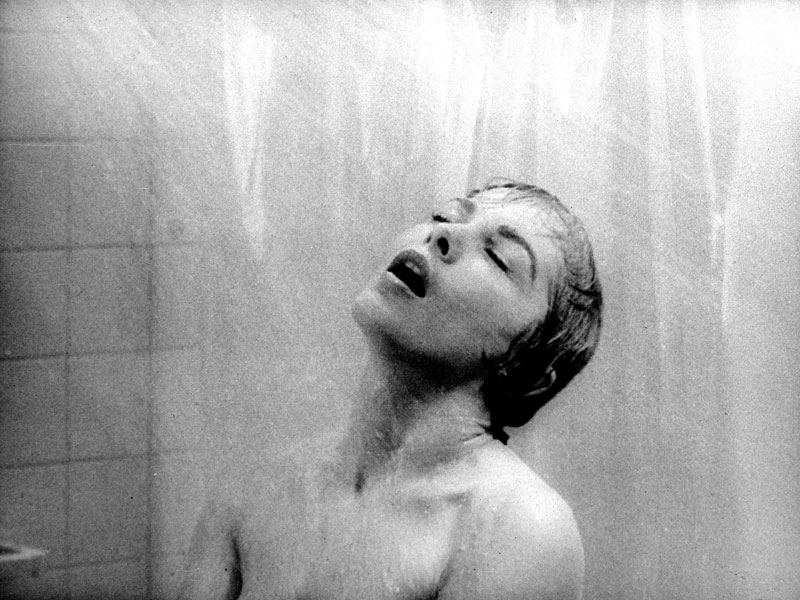PSYCHO-shower scene narration analysis
Each shot has been joined to the next using straight cuts e.g. (shot1) of her sitting at a desk in her dressing gown, writing in a notebook. Following the rules of continuity this is then matched with the next shot (shot 2), a detail shot of the notebook showing her calculations. The dissolve technique is used between the shot of the shower drain and the shot of Marion’s eye.
Abrupt changes of pace are employed within the scene e.g. As Marion starts her shower the pace accelerates and remains measured with each shot lasting 4-5 seconds until shot 18. The next shot of a figure of darkness positioned behind the shower curtain, raising a knife lasts 17 seconds. The function of this is to take us from the peaceful solitude of Marion’s shower through rising tension to the moment of crisis.
 The shot of blood flowing down the shower drain and the eyeshot is matched within the same sequence. Graphic matching is used to create a smooth visual transfer from one shot to the next.
The shot of blood flowing down the shower drain and the eyeshot is matched within the same sequence. Graphic matching is used to create a smooth visual transfer from one shot to the next.This sequence is constructed in a discontinuous manner. The scene runs for three minutes and includes fifty cuts. Like previously explained, many shots are placed within the sequence before the appearance of the dark figure to create a contrast. Tension is built up to moment of crisis, then as the figure begins to stab, shots return to a faster pace, conveying the frenzy of the attack.
The film-maker utilises compilation sequences e.g. 9 shots are used, showing Marion showering from various camera angles. This is done to follow the rules of continuity so that the narrative is clear and easy to follow.
The film-maker utilises cross-cutting within this sequence e.g. Norman spies on Marion briefly through a hole in the wall and then returns to the Bates house. He is seen from behind slouching resignedly around the ground floor. The action returns to the interior of Marion’s cabin. I believe this emphasises the separation between the two characters (the feelings of love aren’t mutual).
Sound is being used in conjunction with editing in a very obvious way e.g. Sound is kept very quiet and low-key up until the later part of this sequence, matching Marion’s feeling of relaxation as she showers. This all changes at the point by which the curtain is pulled back and the figure of darkness raises a knife. Sudden dramatic violin sounds accompany this moment and further emulate the stabbing motion, dramatically enhancing the sense and horror of what is taking place. The change in music to much slower, deeper notes indicates the next change in pace (after the murderer’s exit).











